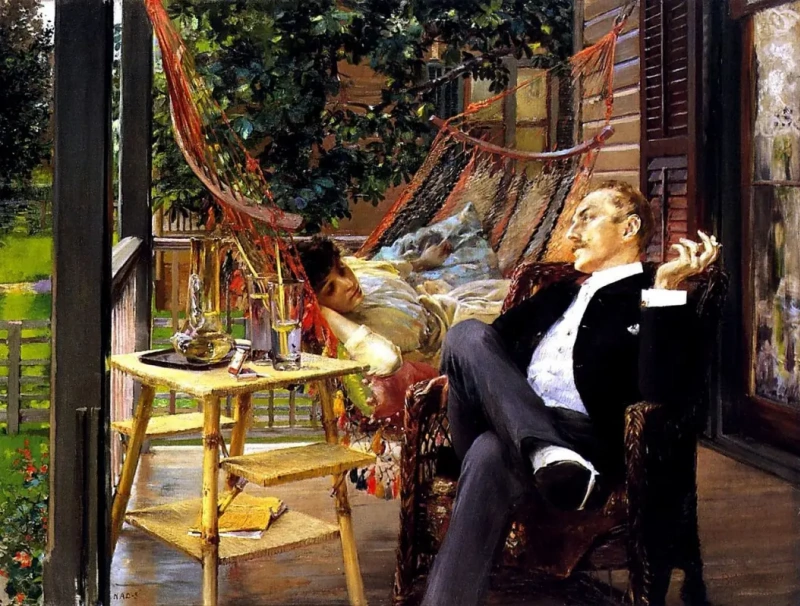Lived and worked mainly in Philadelphia. Graduated from the Pennsylvania Academy of fine arts, and then in 1866-1870 perfected his skills in Europe, mainly in Paris under the direction of Jean-Leon Gerome. From 1876, he taught in their native Academy, in 1882, became its Director. In 1886 Eakins was dismissed.
Lived and worked mainly in Philadelphia. Graduated from the Pennsylvania Academy of fine arts, and then in 1866-1870 perfected his skills in Europe, mainly in Paris, under the direction of Jean Leon Jeromes 1876 taught in their native Academy, in 1882, became its Director. However, throughout the teaching career at Eakins there was friction with the Board of Trustees of the Academy due to the fact that Eakins paid great attention to the study and graphic nudity, showing thus not suited to the age catholicity (so, in classes of Eakins students have often posed to each other naked). Finally, in 1886 Eakins was dismissed for what the class, where he was responsible for not only students, but also students, put the man sitter in completely naked, without a Fig leaf. Classes of Eakins continued in Philadelphia League of students of art (Philadelphia''s Art Students League).
In the painting of Eakins and the pictures of him naked and half-naked body (usually male) has a prominent place. He owns a lot of the images of athletes, especially rowers and fighters. Special interest of Eakins caused transfer movements of a human body, what partly due to his passion for photography; many famous paintings of Eakins (including Arcadia, 1883) was preceded by a photographic "sketches".
"Clinic Gross"
Among the most important works of Eakins - portraits in a multi-figured environment, including the famous "Clinic gross" (1875), depicting a famous surgeon Philadelphia Samuel gross, governing the operation (apparently, to remove part of the bone from the hip of a patient before filled with students amphitheater medical Academy. The heroic figure of Dr. gross is perceived as a hymn to the achievements of human thought. This picture, one of the most voluminous works of the artist (h cm), caused, but not too warm welcome contemporaries, shocked by the image in the painting of the surgical procedure, and was sold for only $ 200. For comparison it is possible to have in mind that in 2006, when the picture was again offered for sale and wanted to buy the national gallery of art in Washington, Philadelphia was announced fundraising to save the Clinic gross in his native city of Eakins; were collected $ 30 million, which allowed the Philadelphia Museum of art and the Pennsylvania Academy of fine arts, to acquire a picture in joint ownership for a total amount of 68 million dollars.
Brush Eakins also owns a significant number of portraits, including a portrait of Walt Whitman (1887-1888), which the poet himself was considered the best.
-
Artworks liked by75 users
- Artworks in 96 selections
Publication
Exhibitions
All exhibitions of the artist







Feed
Tokovi / križišča. Ameriška umetnost 1850-1950exhibition finished

Tokovi / križišča. Ameriška umetnost 1850-1950exhibition added











